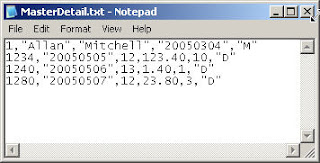

Using the SQL Server 2005 SSRS you can format the reports and use the RDL file in your application to export it to an EXCEL 2003 file format
Note: Excel 2007 is not supported and
The deployment machine should have "Microsoft.ReportViewer.WinForms" in the GAC.
Sample Code:
//Namespace
using System;
using System.Data;
using System.Text;
using System.Windows.Forms;
using System.IO;
using System.Collections.Generic;
using System.Drawing.Imaging;
using System.Drawing.Printing;
using Microsoft.Reporting.WinForms;
//Namespace
// Function to get the datatable
private static DataTable LoadSalesData()
{
// code to get the Data Table
}
// Main code to render report to EXCEL 2003 file
static void Main(string[] args)
{
Warning[] warnings;
string[] streamids;
string mimeType;
string encoding;
string extension;
ReportViewer reportViewer = new ReportViewer();
// Set Processing Mode
reportViewer.ProcessingMode = ProcessingMode.Local;
// Set RDL file
reportViewer.LocalReport.ReportPath = "MyReport.rdl"; //Keep the RDL file in the Bin Folder
// Supply a DataTable corresponding to each report data source
reportViewer.LocalReport.DataSources.Add(
new ReportDataSource("MyDataset", Program.LoadSalesData()));
// The Above Dataset name should be same as in the RDL file
// Process and render the report
reportViewer.RefreshReport();
// Render to Excel
byte[] bytes = reportViewer.LocalReport.Render("Excel", null, out mimeType, out encoding, out extension, out streamids, out warnings);
FileStream fs = new FileStream(@"c:\outputReport.xls", FileMode.Create);
fs.Write(bytes, 0, bytes.Length);
fs.Close();
}
Deployment in the production Box
Deploying Reports and ReportViewer ControlsYou can freely distribute reports and the ReportViewer controls as part of your application. Deployment requirements vary widely depending on the control type and whether your report is configured for local or remote processing. You can deploy locally processed and remotely processed reports in the same application.
Redistributing the ReportViewer ControlsThe ReportViewer control redistributable is a self-extracting file named ReportViewer.exe that includes an .msi and other files. You can find ReportViewer.exe at the following location: C:\Program Files\Microsoft Visual Studio 8\SDK\v2.0\BootStrapper\Packages\ReportViewer\ReportViewer.exe.
When you run ReportViewer.exe, the following files are copied to the Global Assembly Cache folder on the deployment computer.
File
Microsoft.ReportViewer.Common
Microsoft.ReportViewer.ProcessingObjectModel
Microsoft.ReportViewer.WebForms
Microsoft.ReportViewer.WinForms
for more information visit
http://msdn.microsoft.com/en-us/library/ms251723(VS.80).aspxIssue:
While formatting data in the html, we can use CanGrow and CanShrink to adjust the Cell width and Height, but while exporting/rendering to Excel, all the cells in the Excel sheet having Text Wrap Enabled. There is no way to resolve this, except using Interop Services of Excel, but it requires Excel to be installed on the Production Box.
Resolution:
The issue occured when i select a single column and made CanGrow = False and CanShrink = True. If you select all the columns and set these values then the issue is resolved. ;-)







